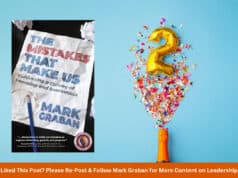WSJ.com – Amid Price War, Chrysler To Revamp Manufacturing (subscription required):
Today's WSJ has an article about Chrysler's attempts to produce three different models, instead of just one or two, at their assembly plants. Such flexibility will lead to increased utilization and higher profits. Toyota and Honda often produce up to six models at plants in Japan.
“In North America, Toyota executives say, relatively high turnover among assembly workers means workers are not as steeped in the company's manufacturing systems. Implementing flexible systems is ‘daunting,' said a Toyota manufacturing executive, Art Niimi, even though the company's initial aim in North America is to produce just three different models on an assembly line.
On a line at its plant in Georgetown, Ky., which builds roughly one Camry or Avalon a minute, an operator used to have to make multiple decisions to choose among 24 kinds of visors and nine different seatbelts, depending on which vehicle was coming down the line. Now, in an effort to stabilize quality, the company is implementing a new in-plant method to simplify production systems and eliminate as many errors as possible.
Under the new system, known internally at Toyota as ‘kitting,' workers synchronize packages of parts with the order of vehicles heading down the assembly, and place part kits inside vehicles under construction. The aim is to limit the number of decisions an hourly worker makes per vehicle to two or less — and thus reduce complexity and improve quality.”
It's interesting to see this tradeoff between producing MORE models (which would reduce cost, but hurt quality given the circumstances) and producing FEWER models (which reduces complexity).
Please scroll down (or click) to post a comment. Connect with me on LinkedIn.
Let’s work together to build a culture of continuous improvement and psychological safety. If you're a leader looking to create lasting change—not just projects—I help organizations:
- Engage people at all levels in sustainable improvement
- Shift from fear of mistakes to learning from them
- Apply Lean thinking in practical, people-centered ways
Interested in coaching or a keynote talk? Let’s start a conversation.










So, could you say that even in the manufacturing world – often times the human brain is yet another constraint and everything must be done to protect it? Is this what lean is ultimately driving toward? Just a thought…
I’ve always thought it curious that I was taught that Toyota valued people’s thinking, but that they also strove to (as it was told to me) “remove decision making from people’s days”. I think they are striving for simplicity as a way of reducing errors through error proofing. Like many things, I assume there is a balance between simplicity and complexity that maximizes profits and provides meaningful work. Even if people aren’t supposed to be making a decision each time a car rolls by, they have input into improving the process, giving a new process to “not think” about as it’s happening. Is this paradoxical? Is this wrong?